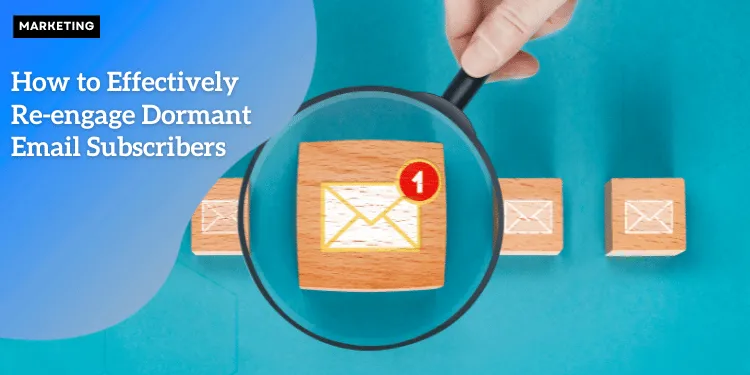How to Effectively Re-engage Dormant Email Subscribers

Anúncios
Introduction
For merchants, understanding how to re-engage dormant email subscribers is crucial for maintaining the effectiveness of their email marketing efforts.
This practice ensures that you are continuously nurturing relationships with your audience, keeping your brand top of mind, and boosting your overall email marketing performance.
A few years ago, while working for a prominent U.S.-based email service provider, I had the opportunity to help a leading direct-to-consumer personal-care brand re-engage a large segment of inactive subscribers.
The brand had a list of 30,000 subscribers who hadn’t opened an email in 2 to 7 years, which presented both a challenge and an opportunity.
Anúncios
With a carefully planned re-engagement strategy, we successfully reactivated over 50% of these dormant subscribers, all while maintaining email deliverability and safeguarding the brand’s reputation.
In this article, I will walk you through the essential steps to re-engage dormant email subscribers, offering practical insights that will help you reconnect with inactive audiences, drive better email results, and improve your email list health.
 Email
Email
1. Create a Separate Segment for Dormant Subscribers
One of the first steps in re-engaging dormant email subscribers is to create a dedicated segment for these individuals.
Anúncios
Mixing inactive subscribers with engaged ones in your regular email sending cadence can confuse both your audience and email service providers.
More importantly, this can lead to deliverability issues, potentially sending your campaigns straight to the spam folder.
Instead, it’s best to isolate dormant subscribers and send them targeted re-engagement campaigns.
This allows you to communicate with them without affecting the performance of your regular campaigns.
Start by identifying subscribers who haven’t interacted with your emails in a specified period—whether it’s 6 months, a year, or even longer.
2. Prioritize the Most Recently Engaged Subscribers
Not all dormant subscribers are created equal. Some may have disengaged recently, while others have been inactive for several years.
When crafting your re-engagement strategy, prioritize subscribers who have been inactive for a shorter time.
These subscribers are more likely to open your emails and take action, which can help improve your engagement rates and overall campaign performance.
To do this, segment your list by recency of engagement and start sending re-engagement emails to the subscribers who have been inactive for the least amount of time.
As you progress to the older segments, you will likely see a gradual decline in open rates and click-through rates.
If you notice a significant drop-off, you may have reached the limit of re-engageable subscribers in that particular segment.
For example, in the case of the DTC personal-care brand, we started by targeting subscribers who hadn’t engaged in the past two years, then slowly moved on to those who were inactive for up to five years.
The goal was to maintain email engagement without overwhelming the recipients or damaging deliverability.
3. Take It Slow and Steady
It can be tempting to send a massive email blast in an attempt to re-engage a large number of dormant subscribers quickly.
However, this approach is not ideal, as it can raise red flags with your email service provider and harm your email deliverability.
Instead, a gradual and steady approach works best. Do not increase the volume of your email sends by more than 10% of your usual volume.
This helps avoid triggering spam filters and keeps your sender reputation intact.
Slowly ramping up the number of emails you send allows you to monitor how subscribers are responding and make necessary adjustments to your strategy.
By taking this methodical approach, you can protect your email deliverability while still re-engaging dormant subscribers.
This strategy also gives you time to refine your email content based on the data you gather throughout the campaign.
4. Craft Compelling Copy That Resonates
When re-engaging dormant subscribers, your email copy must be compelling, relevant, and able to capture their attention immediately.
Start by acknowledging the long period of inactivity in a friendly and inviting manner.
For example, you might use subject lines or preheaders like “We’ve missed you” or “Where have you been?” to encourage subscribers to open your email.
Offering an exclusive promotion or incentive can further incentivize subscribers to re-engage with your brand.
The promotion should ideally be placed in the subject line or preheader, ensuring that it stands out and grabs attention.
Personalizing the email by addressing subscribers by their first names is also an effective way to make the email feel more personal and relatable.
If offering a promotion isn’t feasible for your business, you can focus on highlighting exciting changes or updates that have occurred since the subscriber last engaged.
For example, the DTC brand I worked with had launched a highly anticipated celebrity partnership for Pride Month.
By emphasizing this collaboration and offering limited-edition products tied to the campaign, we were able to capture the interest of many inactive subscribers.
Additionally, A/B testing is a crucial aspect of optimizing your re-engagement strategy.
Test different subject lines, offers, and content formats with smaller micro-segments of your email list.
After analyzing the results, send the winning version to the broader list to maximize engagement.
5. Make It Easy to Opt Out
It might seem counterintuitive, but it’s essential to make the opt-out option easy to find in your re-engagement emails.
While the ultimate goal is to re-engage dormant subscribers, you should also respect their decision if they no longer wish to hear from you.
Providing an easy unsubscribe option reduces the likelihood of spam complaints, which could damage your sender reputation.
By allowing uninterested recipients to opt-out effortlessly, you are not only keeping your email list clean, but you’re also showing respect for your subscribers’ preferences.
This can lead to better overall engagement in the long run, as you will have a more active and interested email list.
6. Exercise Patience and Consistency
Re-engaging dormant email subscribers is not a one-time event but rather an ongoing process.
For the DTC brand, we emailed the inactive subscribers every 2 to 3 weeks for a period of three months, allowing us to gradually re-integrate them into the regular email cadence.
Although sending emails once or twice a month may seem infrequent, this frequency ensures that you have enough time to assess performance, refine your strategy, and create valuable content for your audience.
With patience and consistency, you can build long-term relationships with re-engaged subscribers, turning them into loyal customers who continue to engage with your brand.
This sustained approach will yield better results over time and ensure that your email list remains healthy and engaged.
7. Ongoing Re-engagement Is Key
Dormant subscribers are a reality for every email marketing list.
However, rather than waiting years to re-engage inactive subscribers, it’s essential to take proactive steps regularly.
A twice-yearly re-engagement campaign can help ensure that your subscribers stay active, your email list remains clean, and your revenue stream stays consistent.
Regular re-engagement campaigns prevent subscribers from becoming completely inactive, allowing you to continuously maintain an engaged audience.
Keeping track of engagement metrics and adjusting your strategy as needed will help you stay on top of your email marketing game.
| Step | Before | After (Re-engagement Strategy) |
|---|---|---|
| 1️⃣ Create a Separate Segment | Inactive subscribers mixed with engaged ones | Isolate dormant subscribers into a separate segment to avoid deliverability issues |
| 2️⃣ Prioritize Recently Engaged Subscribers | No segmentation based on recency of engagement | Target subscribers who have been inactive for the shortest period for higher engagement rates |
| 3️⃣ Take It Slow and Steady | Sending mass emails to a large list of dormant subscribers | Gradually increase email volume by no more than 10%, monitoring response rates and adjusting |
| 4️⃣ Craft Compelling Copy | Generic email copy | Personalized, compelling copy with exclusive promotions and engaging subject lines like “We’ve missed you” |
| 5️⃣ Make It Easy to Opt Out | Opt-out process difficult to find | Provide a clear and easy opt-out option to respect subscriber preferences |
| 6️⃣ Exercise Patience and Consistency | One-time re-engagement attempt | Send re-engagement emails consistently, evaluating performance and refining strategy over time |
| 7️⃣ Ongoing Re-engagement | Re-engagement only when necessary | Regularly schedule re-engagement campaigns (e.g., twice a year) to keep subscribers active |
Conclusion
Re-engaging dormant email subscribers is an essential part of any effective email marketing strategy.
By following a carefully planned, methodical approach, ecommerce brands can rekindle relationships with inactive subscribers, boost email engagement, and improve their overall deliverability.
The key steps—segmenting dormant subscribers, taking a gradual approach, crafting compelling content, and making the opt-out process easy—ensure that you not only protect your sender reputation but also increase the likelihood of re-engaging inactive recipients.
Remember, the goal of re-engagement is to connect with subscribers who are genuinely interested in hearing from you.
By being patient, consistent, and strategic, you can turn dormant subscribers into valuable, long-term customers.
Keep your email marketing campaigns fresh and relevant, and you’ll see improved results and a stronger connection with your audience.
How to Effectively Monitor Competitors’ Email Marketing for Strategic Insights
